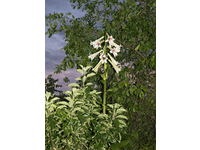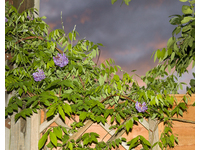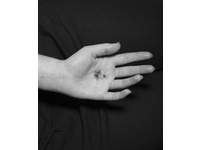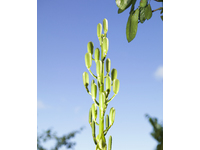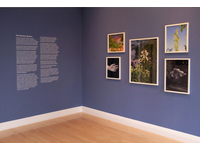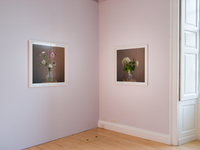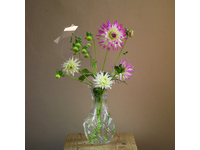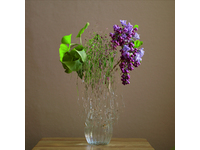McMurdo, Wendy  ORCID: https://orcid.org/0000-0001-8568-9641
(2020)
'Florilegium: A gathering of flowers'- Inverleith House, Royal Botanical Gardens, Edinburgh. Sep 16th – Dec 13th 2020.
[Exhibition]
ORCID: https://orcid.org/0000-0001-8568-9641
(2020)
'Florilegium: A gathering of flowers'- Inverleith House, Royal Botanical Gardens, Edinburgh. Sep 16th – Dec 13th 2020.
[Exhibition]
| Item Type: | Exhibition |
|---|---|
| Event Summary: | 'Florilegium: A gathering of flowers'- Inverleith House, Royal Botanical Gardens, Edinburgh. Sep 16th – Dec 13th 2020/Inverleith House, Royal Botanical Gardens Edinburgh /Sep 16th – Dec 13th 2020 |
| Creators: | McMurdo, Wendy |
| Abstract / Summary: | New commissioned work produced for 'Florilegium: A gathering of flowers', curated by Inverleith House curator Emma Nicholson. As part of Florilegium I’ll be showing new work, produced over the lockdown period in response to my mother’s death (one of my most personal works to date). The showran from Sep 16th – Dec 13th 2020 Further details: ‘New and existing works by contemporary artists Lee Mingwei, Annalee Davis, Wendy McMurdo and Lyndsay Mann join over 40 established botanical artists such as Mieko Ishikawa, Dianne Sutherland and Sansanee Deekranjang in Florilegium: A gathering of flowers, at Inverleith House, Edinburgh, which re-opens this Autumn. The biennial exhibition is the first of a new programme as Inverleith House begins its The artists will respond to Royal Botanic Garden Edinburgh’s (RBGE) globally-important plant collection comprising over 13,500 species with works that reveal how flowers can elicit cultural, historic, geographic, socio-political and scientific ideas. The title derives from the name for a group of botanical artworks and is part of RBGE’s ambitious project to catalogue the plant collection through botanical and contemporary art responses. The artists - living and working internationally - have overcome the challenges of a global pandemic this year to create new and never seen before works of art for Florilegium. They will be displayed for the first time in this major exhibition marking the post-Covid19 reopening of Inverleith House. Running from 16th October until 13 December 2020, Florilegium: A gathering of flowers will feature works showing plants that can be seen growing in the Royal Botanic Garden Edinburgh Glasshouses, and others of significant scientific value. Joining these botanical artworks will be a series of new and existing works from Annalee Davis, Wendy McMurdo, Lee Mingwei and Lyndsay Mann. Work draws upon ideas of death, renewal, ritual and colonial history and span photography, moving image and works on paper. Created during lockdown, Scottish artist and photographer Wendy McMurdo’s new series of images Night Garden was inspired by the flowers growing in the garden beyond her studio. Watching the cycle of germination, growth and renewal from her studio window seemed in direct opposition to her world inside and online. Wendy’s mother died in early May, and at the outset of lockdown and in the weeks that followed her death, she spent her time documenting this growth cycle which seemed more urgent than ever before. Finally, Lyndsay Mann’s cinematic essay A Desire For Organic Order is an immersive study of the Herbarium and the Centre for Middle Eastern Plants at the Royal Botanic Garden Edinburgh. Made in 2016, this intimate and epic work weaves together testimonies, journal entries, diaries and letters of diverse voices, tracing archive materials to contemporary links between Scotland and the Middle East.’ |
| Date: | 16 October 2020 |
| Funders: | Outset Contemporary Art Fund’s Transformative Grant, Royal Botanical Gardens Edinburgh |
| Additional Information: | Night Garden was produced over the lockdown period in response to my mother’s death and documented the unexpected appearance and flowering of an unusual and spectacular plant in my suburban garden during the dark days of the 2020 pandemic. This piece – which includes image and text - was commissioned for the group exhibition Florilegium – a gathering of flowers, the inaugural biennial exhibition to mark the re-opening of Inverleith House at the Royal Botanical Gardens, Edinburgh. This exhibition also marked Inverleith House’s new status as a ‘Climate House’, a unique space to critically explore our complex relationship with the natural world. Florilegium included new and existing works by contemporary artists Lee Mingwei, Annalee Davis, Wendy McMurdo and Lyndsay Mann joined over 40 established botanical artists such as Mieko Ishikawa, Dianne Sutherland and Sansanee Deekranjang. Florilegium – a gathering of flowers, Inverleith House, Royal Botanical Gardens, Edinburgh from 16th Oct – 13th Dec 2020. More info here: https://www.rbge.org.uk/whats-on/inverleith-house/introducing-climate-house/florilegium-a-gathering-of-flowers/ Out of the dark, a lily grows The early months of the Covid-19 lockdown coincided – ironically – with the warmest May ever recorded in Britain. What were - for many - the darkest months of their lives also turned out to be the sunniest. The sunsets that month were frequent and spectacular. Night after night, the May skies were filled with lilac and purple. My wisteria flowered for the first time. From early in the spring of 2020, an unidentified plant (bought years before, from a long- forgotten source) had slowly been making its presence felt. In a dark corner of my small city garden, large glossy leaves that looked vaguely tropical began to appear and unfurl, quickly blocking the path as the plant began to rapidly grow. My mum, who was in her 80s and lived alone, went into lockdown. Her health went rapidly downhill. As my mother became ill and was quickly admitted to hospital, the unfurling leaves of the plant were identified by my tree surgeon brother-in-law (one of the rare visitors to the garden in the months of deep lockdown) as belonging to a ‘very special’ Cardiocrinum Giganteum. From the studio window, I could now see the plant and I began to watch it more closely and over the weeks that followed, its central stalk grew rapidly. Eventually, it towered over the garden fence, the fruit trees beside it and the surrounding gardens. Its scale seemed at almost comical odds with the suburban planting around it. Watching its rapid and dramatic progress became the focus of the long days of lockdown, as the events around us were taking us to ever darker places. My mum died that month. As she was admitted to hospital at the height of Covid-19 lockdown - no visitors were allowed into hospital wards. She died there a week after her admission. The Cardiocrinum continued to grow and the weather to be beautiful. Every day, it seemed to have taken on a substantial amount of growth and eventually stood at just under 3.5 metres tall. At its apex, buds began to form. I read that it’s flowers would could perfume up to an acre of land. When they flowers themselves appeared, they were astonishing - tiers of large waxy white trumpets which, at night, filled the air with the scent of lilies against the backdrops of the vivid sunsets of that Covid spring. For a plant of such an amazing height, the seeds are fragile and can be difficult to germinate – if at all. After germination, the Cardiocrinum Giganteum take seven years to flower with the main bulb then dying. The plants however can be propogated by bulbils, which run from the original plant. |
| Subjects: | Philosophy & Psychology Creative Art & Design > Photography Natural Sciences |
| Department: | Institute of Photography |
| Depositing User: | Wendy McMurdo |
| Date Deposited: | 05 Nov 2020 14:31 |
| Last Modified: | 18 Jun 2025 22:07 |
| URI: | https://repository.falmouth.ac.uk/id/eprint/4081 |
 |
View Record (staff only) |

 Advanced Search
Advanced Search Tools
Tools Tools
Tools